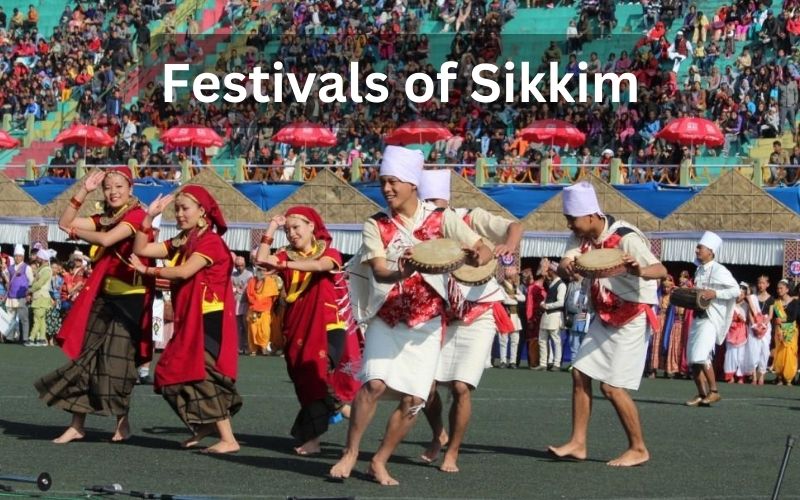
Sikkim is a state where peace and tranquility define the atmosphere. Here, a rich cultural heritage which you can experience through the festivals of Sikkim. A haven for tourists, Sikkim offers a glimpse into a Himalayan wonderland. one of the top vacation locations to visit because of its natural beauty as well as its rich history and culture. The humble nature of the locals adds another layer of charm to the experience. Whether you’re drawn by the vibrant festivals, the serene atmosphere, or the genuine hospitality, Sikkim promises an unforgettable travel experience.
The state pulsates with a vibrant cultural scene, alive with numerous festivals celebrated throughout the year. Each celebration boasts its own distinct charm and significance, offering a window into the heart of Sikkimese traditions. From the warm hospitality of the people to the captivating tapestry of festivals, Sikkim stands out as an unparalleled travel destination. Get ready to discover the magic – Sikkim welcomes visitors from all corners of the world to immerse themselves in the splendor of its festivals. Here’s a glimpse into some of the six most captivating celebrations.
6 Famous Cultural and Religious Festivals of Sikkim
1. Saga Dawa: The famous Buddhist festival of Sikkim
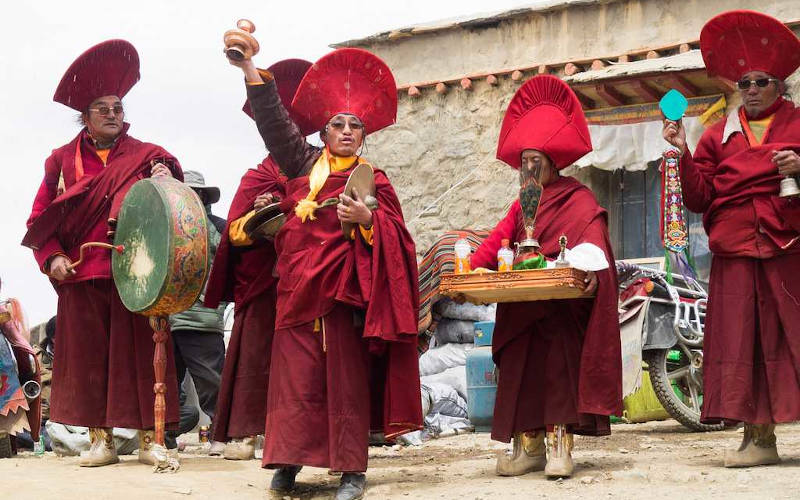
Saga Dawa is one of the biggest and most famous festivals in Sikkim and the most significant and sacred for Mahayana Buddhists.
Significance of the festival:
- Commemoration of Lord Buddha’s Birth, Enlightenment and Liberation: Mahayana Buddhists commemorate the birth of Lord Buddha, his enlightenment and his liberation from the earthly world at this time.
- Glimpse of Buddhist Culture: For all travelers and cultural enthusiasts who want to see or understand a glimpse of Buddhist culture, “Saga Dawa” is undoubtedly a great opportunity for them.
History:
- Centuries old: Although Saga Dawa or the Triple Blessed Festival is believed to have a history dating back many centuries,
- Official Announcement: The date was officially announced at the First Conference of the World Fellowship of Buddhists held in Sri Lanka in 1950.
Festival Time:
- English month: falls between the end of May and the beginning of June according to the English calendar.
Festival Rituals:
- Religious Rituals: A number of religious rituals are performed throughout the month, including the reading of holy scriptures called ‘Kajur Text’ and the lighting of butter lamps.
- Procession: Devotees throng the streets of Gangtok in large numbers on the day of the final procession to seek blessings and express gratitude to the Lord.
Festive attractions:
- Lighting butter lamps: The lighting of butter lamps in monasteries by Mahayana Buddhists, indicating their obeisance to Lord Buddha who is believed to have enlightened their paths in life.
- Gorgeous Pageant: A grand pageant starting from Suk-La-Lang Monastery, led by monks carrying holy scriptures and portraits of Lord Buddha, weaves through the streets of Gangtok amid eclectic Buddhist hymns and songs, providing a mesmerizing spectacle for all visitors.
2. Guru Rinpoche’s Thrunkar Tshechu
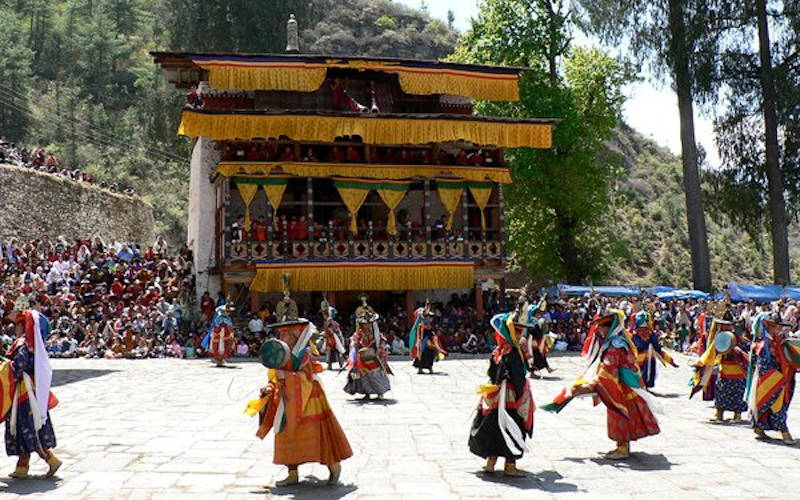
Thrunkar Tshechu, one of the most important Buddhist festivals in Sikkim, is celebrated to mark the birth anniversary of Guru Rinpoche (Padmasambhava). Guru Rinpoche established Tibetan Buddhism in Sikkim and the surrounding Himalayan region.
Festive attractions:
- Special Prayers and Rituals: Special prayers and rituals are performed in all monasteries.
- Colorful Procession: A grand procession is conducted through the streets led by Buddhist monks and lamas playing various traditional musical instruments.
- Cham Dance: The ‘Cham Dance’ performance depicting various episodes of Padmasambhava’s life left everyone spellbound.
IMPORTANCE:
- Guru Rinpoche: Guru Rinpoche is the revered patron saint of Sikkim who introduced Tantric and Vajrayana Buddhism to the region after defeating demons in the 8th century.
- Concept of Sechu: The concept of Sechu was initiated by Guru Rinpoche himself.
- Spread of Tibetan Buddhism: Guru Rinpoche established Tibetan Buddhism in Sikkim and the surrounding Himalayan region.
When celebrated:
- Tibetan Lunar Calendar: Thrunka Sechu is observed on the tenth day of the fifth month of the Tibetan lunar calendar (July-August).
Festival Atmosphere:
- Living Ambience: The entire state of Sikkim comes alive with a grand procession of Guru Padmasambhava’s idol on the auspicious occasion of Thrunkar Sethu.
- Congregation of Devotees and Followers: Countless devotees and followers thronged around to the sound of ‘Om Ah Hung Vajra Guru Padma Siddhi Hung Ri’.
- Spiritual Environment: All monasteries in the state, on this holy day, perform special prayers and rituals to seek the blessings of the great patron saint.
Thrunkar Tshechu is not just a festival, but an expression of respect and gratitude to Guru Rinpoche. This festival is an important part of Sikkim’s rich culture and heritage.
3. Losar: A Celebration of New Beginnings in Sikkim
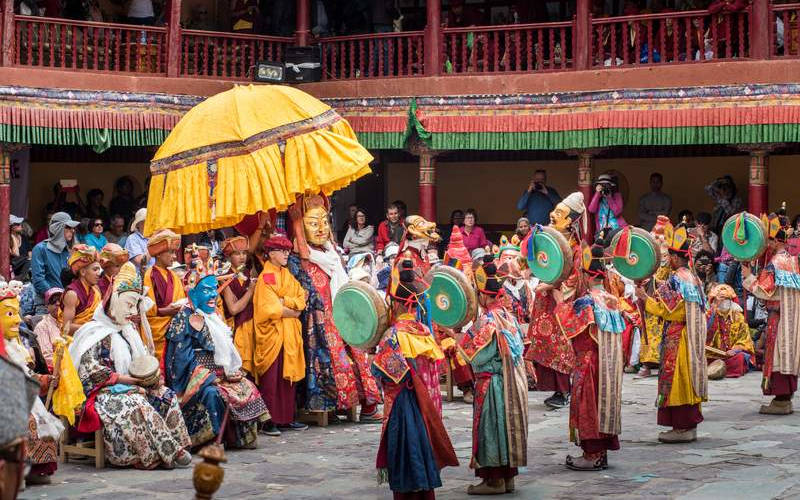
Losar, a vibrant festival steeped in history and tradition, marks the Tibetan New Year. Its origins can be traced back to Tibet, India, Bhutan, and parts of Nepal, where Buddhism played a significant role.
Initially, it’s believed to have been observed as a winter festival focused on appeasing local deities and encouraging self-reflection through offerings of incense. Over time, with the development of Tibetan astrology and its predictive practices, Losar evolved into a joyous celebration of the harvest season and the incoming new year.
Losar typically falls in February, on the 29th day of the 12th month in the Tibetan lunar calendar. The festivities kick off a week before, transforming Sikkim into a state buzzing with excitement. Streets, houses, and monasteries come alive with a kaleidoscope of colors. People don their finest new clothes and adorn themselves with sparkling jewelry.
The air thrums with the joyous sounds of social gatherings and reunions. For tourists, witnessing the graceful Yak dances performed by young people offers a captivating window into Sikkimese culture.
A unique highlight of Losar celebrations in Sikkim’s monasteries are the captivating masked dance performances by Cham monks. Another cornerstone of Losar is the offering of Tsampa, a staple food item, on the household altar. This ritual signifies prayers for a bountiful harvest in the upcoming year.
For those seeking an even deeper immersion, homestays with Sikkimese families allow visitors to participate in daily rituals, fostering a richer understanding of each tradition and the true spirit of Losar.
Also read: 6 Beautiful places of Northeast India to visit this summer
4. Jorethang Maghe Mela: Festivals of Sikkim
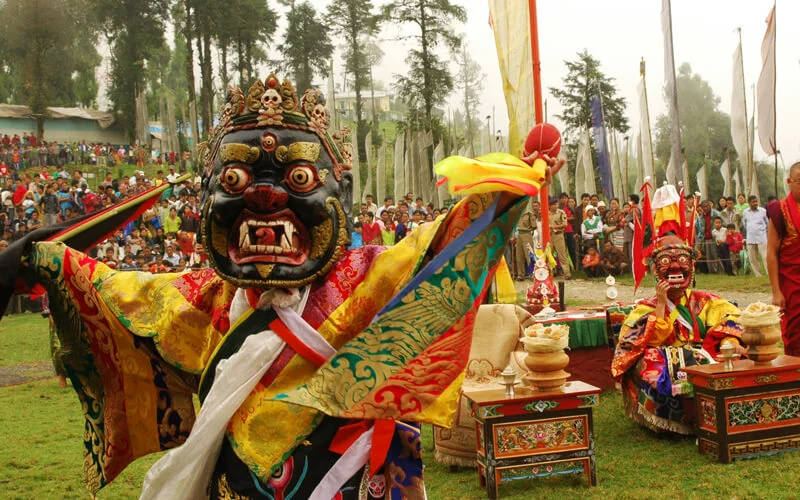
Jorethang Maghe Mela is a famous cultural festival of Sikkim which is celebrated with grandeur every year in Sankranti of Magh month.
Festive attractions:
- Religious Rituals: Holy bath in Teesta and Rangit rivers.
- Cultural events: Traditional dance, music, food shows.
- Sports Competitions: Archery, Para-gliding, Trekking, Hot Air-Ballooning, River Rafting.
- Handicraft Exhibition: Handicrafts and art works made by local artisans.
- Tourism: Tourist attraction from different parts of the world.
Festival History:
- Started: 1955 as a small fair by local residents of Kalimpong, Siliguri and Darjeeling.
- Present: Has become a large tourist center which is a mix of ancient culture and modern entertainment.
Festival Time:
- Dates: Starts from 14th January every year and lasts for 3 days.
Importance of Festival:
- Symbol of culture and tradition of Sikkim.
- Display of Hindu customs and traditions.
- Important for tourism industry.
Jorethang Maghe Mela is a must visit festival when visiting Sikkim.
5. Bhumchu : Famous festival of Sikkim
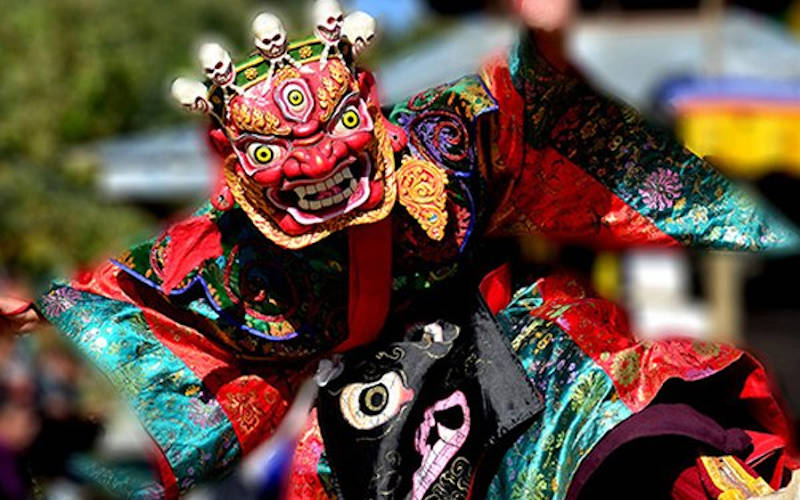
Bhumchu festival is a traditional festival of Sikkim state which uses holy water pot to determine the fate of the new year.
Significance of the festival:
- New Year Predictions: The fate of the kingdom for the coming year is determined by observing the water level in the sacred vessel.
- Religious Beliefs: It is believed that the water in the pot was consecrated by Guru Padmasambhava, who was a preacher of Tibetan Buddhism.
- Cultural Festival: This festival symbolizes the rich culture and heritage of Sikkim.
Festival Rituals:
- Festival Time: Celebrated for two days starting from the 14th day of the first month of the Tibetan lunar calendar. (usually in February or March)
- Day 1: Monks at Tashiding Monastery open the sacred vessel and predict the forecast and events for the coming year.
- Second Day: The vessel is refilled with water from the holy river and sealed until it is opened next year.
Festive attractions:
- Holy Water Pot: Fate is determined by observing the water level.
- Religious Ceremony: Mantra recitation and prayer.
- Cultural events: Traditional dance, music and costumes.
Importance of Festival:
- Contains the culture and traditions of Sikkim.
- Symbol of religious faith and spirituality.
- Attractive for tourists.
More information about the festival:
- Place: Tashiding Math, Gangtok, Sikkim.
- Duration: February or March (According to Tibetan Lunar Calendar).
Bhumchu Festival is a unique and interesting festival of Sikkim which highlights the rich culture and heritage of the state. The ritual of using holy water vessels to determine the fate of the new year adds to the mystique of this festival.
6. Sonam Lochar: The Tamang New Year
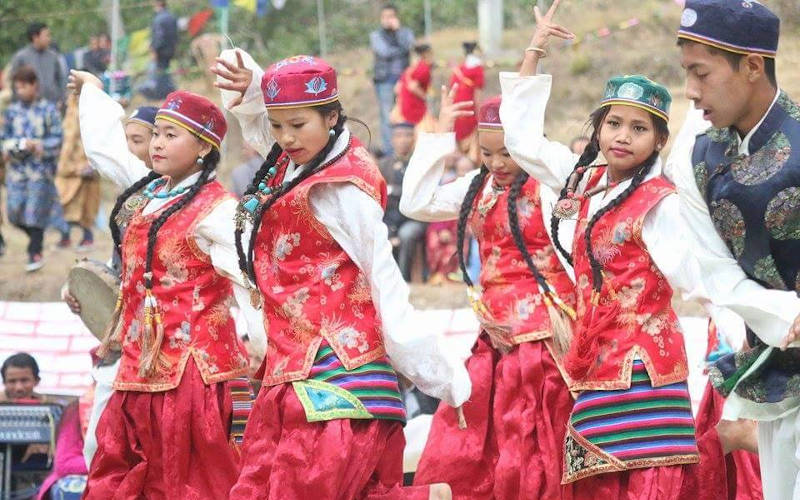
Sonam Lochar is the New Year festival of the Tamang community of Sikkim which is celebrated with great fanfare and enthusiasm.
Festive attractions:
- Traditional Dress: Men and women wear colorful traditional dress.
- Damphu Dance: Masked men perform a rhythmic dance to the beat of the Damfu (traditional drum).
- Tamang Folk Song: A folk song called ‘Tamang Selo’ is sung.
- Masked Dance: Masked llamas perform the dance to ward off negative energy and evil spirits.
- Cultural Programs: Singing, playing, dancing and other cultural programs are organized.
- Dinner together: Friends and family all eat special meals together.
Significance of the festival:
- Beginning of the New Year: The beginning of the Tibetan New Year is celebrated.
- Best Wishes and Wishes: Best wishes and wishes for all.
- Cultural Heritage Retention: The culture and traditions of the Tamang community are retained.
Festival Time:
- Date: First day of new moon in the month of Magha as per Tibetan lunar calendar. (usually in February or March)
- Duration: Celebrated for two weeks.
Importance of Festival:
- An important cultural festival of Sikkim.
- Symbol of culture and tradition of Tamang community.
- Attractive for tourists.
Sonam Lochar is a must visit festival when visiting Sikkim.
